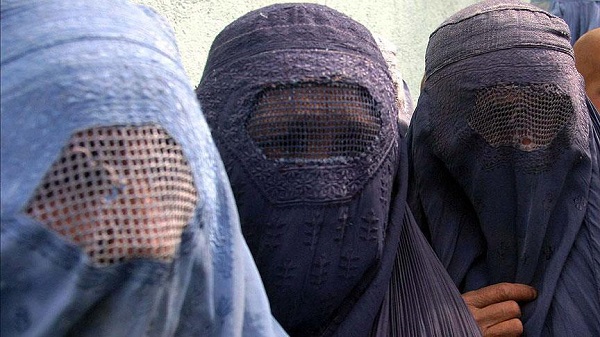FWP:
SETS
MUSIC: {10,3}
VEIL: {6,1}
For background see S. R. Faruqi's choices. This verse is NOT one of his choices; I thought it was interesting and have added it myself. For more on Ghalib's unpublished verses, see the discussion in {4,8x}.
On the distinctiveness of this ghazal, see {211,1}.
This verse of extravagant wordplay is reminiscent of the one before it, {211,6x}, and has the same low-powered, aur bas quality. It's only interesting feature is the reference to the maximalist type of burqa. I've also seen this type referred to as 'shuttlecock burqas', because of how they fan out from a rounded narrow head.

Zamin:
pardah-e zanbūr = A kind of latticed [jālī-dār] burqa.
That is, all the Nightingale's thoughts and anxieties are absorbed in inventing different kinds of melodies (or in preparing the guise/dress of melody). And the result of all his guise of inventiveness-- that is, his pricking [ḳhalish] of melodies (perhaps meaning his trilling)-- is that through the mischievousness of the complaint, holes have appeared in the rose, and they have become a 'wasp-veil'. This is a prose version, or a translation, of the verse; those who would understand the meaning, let them understand [but I don't].
== Zamin, p. 376